What Camera Lens Should I Buy? A Guide for Beginner Photographers
![]()
Many photographers will say that your camera lens is as important (or even more important) than your camera body. All of the light that your camera body captures has to go through some sort of lens, which affects sharpness, distortion, amount of light, perspective, and many other variables.
Table of Contents
What Is a Lens?
First things first: what even are lenses, and why do photographers obsess over them? Lenses direct the light from the scene you want to capture toward the camera’s sensor. In film cameras, lenses direct light onto the film. Lenses are typically characterized by their focal length, in millimeters, and their aperture, in f-stops.
Today, many entry-level cameras are what we call “point-and-shoot” cameras. They usually have built-in, non-interchangeable lenses that can zoom. Although these have greatly improved in quality in the past decade, there are still limits to having a built-in lens that can’t be changed. On the other hand, DSLRs and mirrorless cameras dominate the professional market right now and usually allow photographers to change lenses depending on their situation. To find out if your camera’s lens can be changed, read its manual or search the internet.
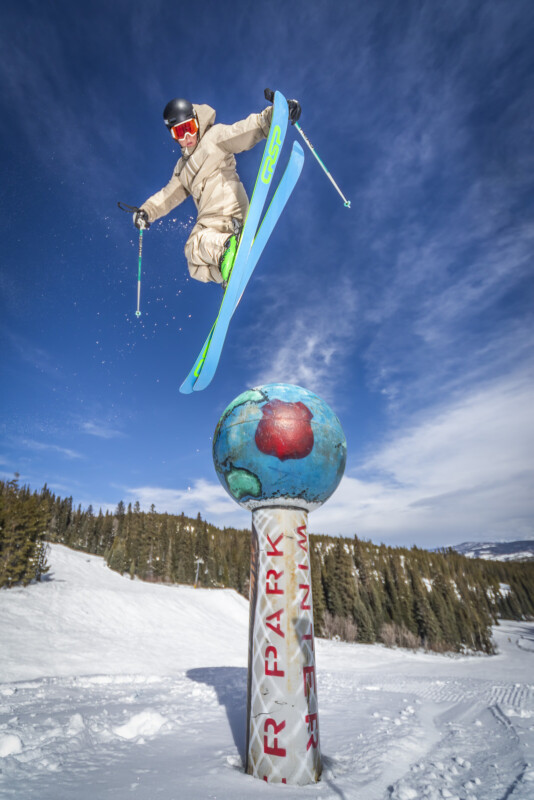
Lens Characterization: Focal Length
In basic terms, the focal length of a lens is how “zoomed in” or “zoomed out” your lens can be. This is very important when deciding what lens to get. The actual measurement is in millimeters, and it is the distance between your lens’s optical center and your camera’s image sensor when the lens is focused.
![]()
The higher the number, the more zoomed in your image will be. The lower the number, the more zoomed out your image will be. On a zoom lens, you’ll see focal length written as “##-##mm,” where the lower number is the most zoomed out and the higher number is the most zoomed-in focal length that a lens can achieve.
For reference, if your eyes had a focal length, it would be somewhere around 20mm, which is fairly wide. On the other end of the spectrum, many sports and wildlife photographers that you’ll see with large lenses are using focal lengths somewhere around 300-800mm.
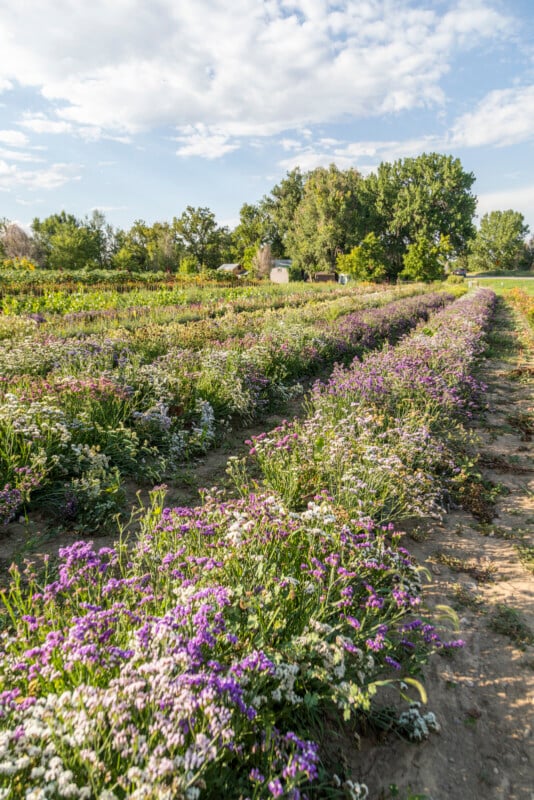

You can easily find lenses that go as wide as 18mm and zoom in to 300mm, but mechanical limitations mean that it’s less common to have a lens that “does it all” with great quality. Yes, 18-300mm lenses exist (and many combinations in-between), but they might be heavier, lower quality, more expensive, or perform worse in low light than other focal lengths.
In the lens world, you’ll often hear people refer to “kit lenses.” These are usually less-expensive lenses that come with a camera body when you buy a kit. The most common kit lens is an 18-55mm lens, which goes from fairly wide to slightly zoomed in.
While many lenses zoom, some lenses don’t. These are called prime lenses, and they have a single, fixed focal length.
Read more: Prime vs Zoom Lenses: A Beginner’s Guide
Prime lenses often have wider maximum apertures than zoom lenses, which will be discussed later in this article. They’re also sometimes lighter, more compact, and sharper because their components don’t need to move. They tend to have fewer mechanical errors because there are fewer moving parts. Their biggest downsides are that they don’t zoom in or out at all, so you might need to carry more than one lens to a shoot if you’re using any prime lenses.
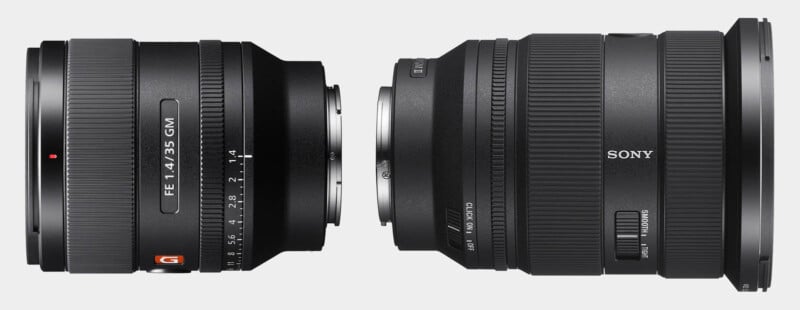
The most common prime lens is a 50mm lens that many photographers call the “nifty-fifty.”

A note about sensor crop: Sensor size affects a lens’s field of view, which can be confusing. A full-frame sensor camera, which is usually more expensive, will produce images without any crop (hence full-frame). A crop sensor camera, also called an APS-C sensor (common in entry-level DSLR and mirrorless cameras), produces images with ~1.5x relative crop.
In other words, an image shot at 50mm on an APS-C sensor would have the same field of view as an image shot at 75mm on a full-frame sensor camera. Many sports and wildlife photographers opt for APS-C sensors because of the increased relative zoom. Many landscape photographers opt for full-frame sensors because they give wider relative images.
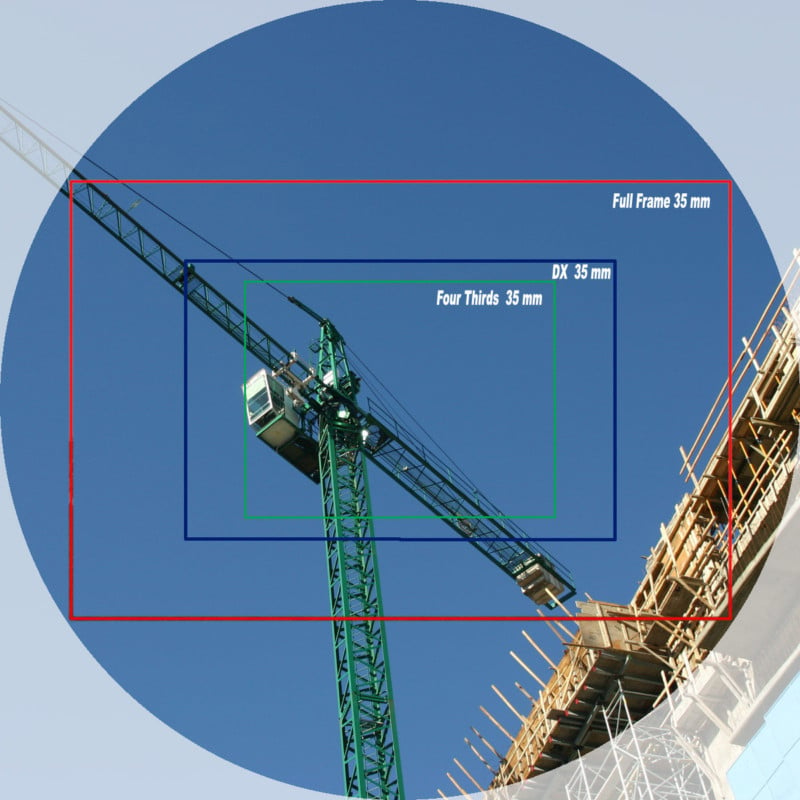
To figure out your camera’s sensor size, check your camera’s manual or search the internet. To learn more about different sensor sizes, check out this article.
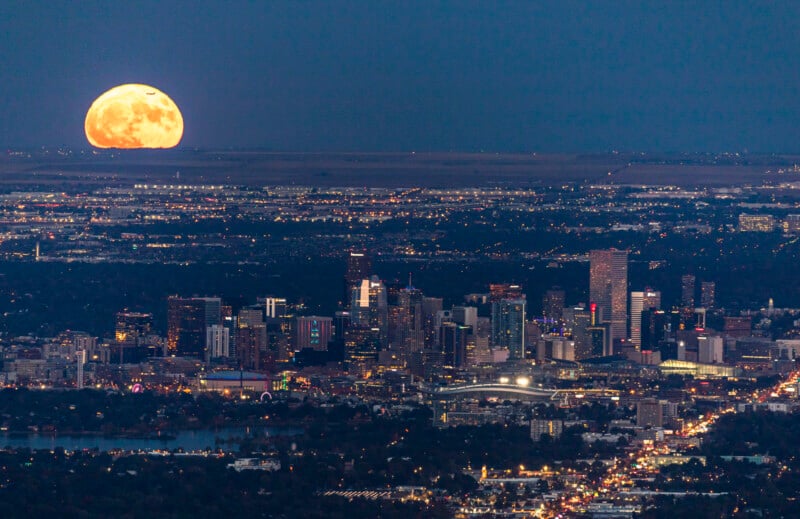
Lens Characterization: Aperture
Aperture is an opening inside a lens that light travels through, and it’s another very important consideration when choosing a new lens. It can be wider and let more light through, or smaller and let less light through. Additionally, wider apertures create more of a blurry background (less depth of field). Some lens apertures can go wider than others, letting more light through and thus being easier to shoot with in dark environments. Some apertures are fixed, and can’t open and close. Either way, lenses are often more expensive if they have wider apertures – mostly because that requires more glass. If you want to learn more about what aperture actually does and how to use it, check out this guide.
Lenses will most often be named with their focal length followed by their maximum aperture. Aperture is written in f-stops, and will look like “f/#.#.” Due to mechanics, some zoom lenses have variable maximum apertures. They’ll be written something like “f/#.#-#.#.” This denotes the maximum aperture that the lens can achieve at each end of its zoom range (zoomed out to zoomed in). For example, the most common kit lens mentioned above is an 18-55mm f/3.5-5.6 lens.
To give you an idea of how much aperture affects lens cost, a used Canon EF 70-200mm f/2.8 L lens is somewhere around $600-800 in the current market, with obvious variations in age and quality. A used Canon EF 70-200mm f/4.0 L lens is somewhere around $300-400. The extra stop of light is worth double the price to many people. There are other considerations about lens sharpness and other features, but the aperture is the most important in this case.
Other Lens Parameters
Aside from focal length and aperture, there are other features that you may come across when deciding what lens to buy.
- Autofocus and manual focus. This is often abbreviated using an “AF/MF” button on most lenses. This isn’t just a matter of old versus new lenses, as some manufacturers produce new lenses that are manually focused for a variety of reasons. The biggest reason is to cut lens costs, and manual focus lenses can often be much more economical.
- Image stabilization. Different manufacturers use different abbreviations for this, but you may see it referred to as IS (Image Stabilization), VR (Vibration Reduction), or something more simple such as Stabilization. This technology essentially uses electronics to stabilize a lens, reducing the amount of handheld camera shake that is present in an image. Lenses with stabilization are harder to make, and therefore they are usually more expensive. When paired with a camera body that has in-body stabilization, shake can be reduced dramatically.
- Minimum focusing distance. Every lens has a minimum distance at which it must be from a subject in order for the subject to still be in focus. Macro lenses, for example, have very low minimum focusing distances so that photographers can get inches (or even closer) from their subjects and still focus properly. Some older, larger lenses have minimum focusing distances of many feet.
- Lens diameter. This is often confused with focal length because it is also measured in millimeters. This is usually found on the end of a lens barrel and denotes the inner diameter of the front of the lens. This is useful for finding filters that will fit correctly, amongst other things.
- Lens weight. Although it may not seem fully necessary for everybody to consider, lenses can get quite heavy because they’re often made of a lot of glass. Shooting with a lens that’s too heavy for hours on end can be exhausting, so many photographers like to compare lens weights when looking at different lenses. Although a tripod can help alleviate exhaustion, tripods can’t always handle really heavy camera and lens weights. Tripods also can be cumbersome to set up and move around.
- Special uses. Some lenses are designed to create special effects or be used for certain things. Tilt-shift lenses, for example, have special components that allow the photographer to straighten lines (often used in architectural photography). Fisheye lenses are usually very wide lenses that create interesting, properly-named effects. Macro lenses can allow for incredible magnification of subjects that are fractions of an inch away from the end of the lens.

So, Which Lens Should I Buy?
After learning about different lens terms and parameters, you need to find a lens that will do what you want on your budget. Many people swear by lenses that come directly from your camera manufacturer (i.e. Canon, Nikon, Sony), but they’re usually a bit more expensive.
Others believe in the power of third-party lenses (i.e. Tamron, Sigma, Rokinon, Samyang, Tokina), and some even claim that certain models are sharper or better than the same lens coming from the camera manufacturer.
Another option is to buy a used lens, although it can come with risks. New lenses usually come with warranties, return periods, and the assurance that the lens is high-quality. Old lenses can have cracks, mold, faulty mechanisms, and more. However, used lenses can also be fantastic deals on gear that someone is simply not using anymore. Manufacturers usually make lens editions, and buying a first or second edition of a lens can often be much less expensive than the latest edition with similar quality. Newer lenses tend to have faster autofocus and better stabilization, but if you don’t mind waiting a bit longer for autofocus or keeping your camera more steady, older used lenses might be the way to go.
If you’re really torn between two or more lenses and you want to really make the right decision, there are many lens rental services available locally or online. Some rental services will ship you a lens with a return shipping label, and all you have to do is pay for shipping plus the days that you’re using the lens. The process is streamlined and very useful when deciding what to invest in.
If you’re looking for a lens based on a certain type of photography, here are a few pointers. Keep in mind that these are just starting places, and many people have gotten great results using unconventional lenses in different scenarios.
Landscape: You probably want a lens that can zoom pretty wide (called a wide-angle lens). Something as wide as 12mm might be a bit overkill, but popular landscape lenses are the 24-70mm lens or something a bit wider like a 16-35mm lens.
Portrait: Your biggest priority should be a wide maximum aperture so that you can create a nice blurry background. The most widely used portrait lens is a “nifty fifty,” which is a 50mm f/1.8 lens. They’re usually cost-effective, lightweight, and produce great shots. Anything with a maximum aperture around f/1.8, or even around f/2.8 would be good for portraits. Other fantastic portrait lenses include 85mm lenses, which can often flatter subjects more due to their compression at a higher focal length and greater distance from the subject. Some photographers use 70-200mm lenses to achieve a similar result.

Wildlife and Sports: Usually, you’ll want a lens that can make your subject fill the frame. This might be a telephoto (zoom) lens, like a 75-300mm or 100-400mm lens. You may also want something with a faster maximum aperture and with greater image quality, so you could look into getting a prime lens such as a 300, 400, or 500mm lens. Many professional sports photographers shoot with really fast prime lenses, which is why their lenses are so large.
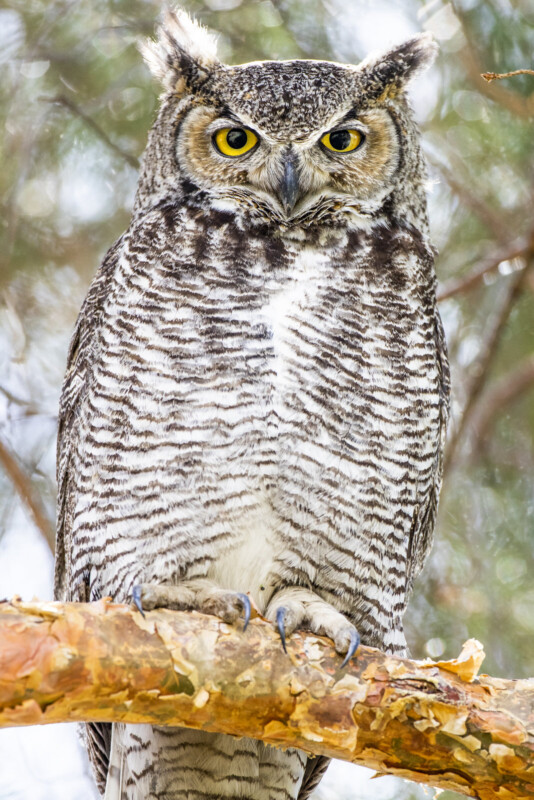
Street: A lot of street photography is at times when there is little light. You’ll probably want something versatile, like a zoom lens with a fairly wide maximum aperture. A 24-105mm f/4 lens might be a good place to start. A 24-70mm f/2.8 might suit others better.
Macro: This one pretty much writes itself. You’ll probably want a macro lens, which is specifically designed to have a small minimum focusing distance. These come in lots of shapes and sizes, so consider what you’ll actually need for what you want to do.

Astrophotography: You need as much light as possible entering your camera, so go for a lens with a really wide maximum aperture. Something like f/2.8 is pretty fast, but even f/1.8, f/1.4, or f/1.2 just gets better. The faster the lens, the more detail that can be captured in the stars.
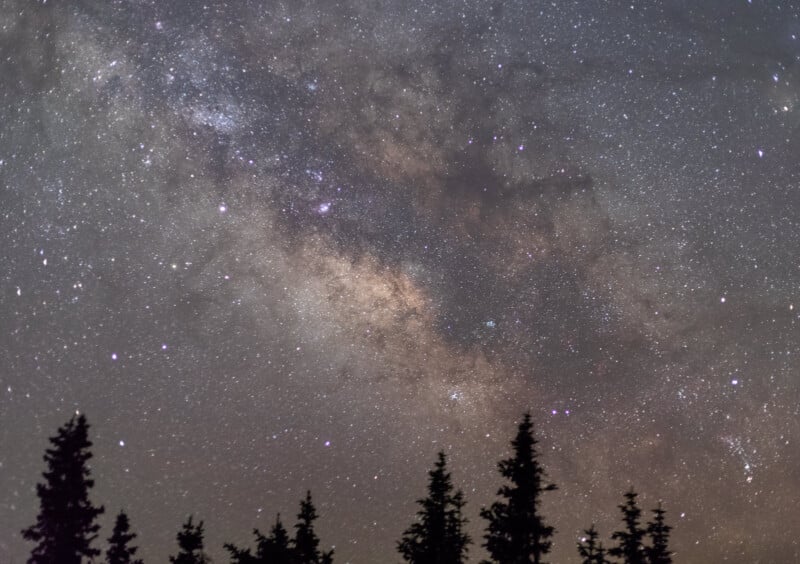
Conclusion
There are lots of factors to consider when buying a camera lens. The two most important factors are focal length and aperture, which can have great impacts on price and quality. Decide what you’re trying to achieve with your new lens, and look at lenses that will help you achieve those goals.
Remember that, although there are many traditional uses for certain lenses, people have made names for themselves by using lenses in new ways. Wide-angle sports images or telephoto landscapes often help people stand out from the crowd. Lenses will help you achieve your creative goals, but they may also force you to expand what your goals are.
Once you’ve decided what lens you’re looking to purchase, remember that there are many options for purchasing lenses. You can buy name-brand lenses from the manufacturer, third-party lenses, or take a look at used lens options.
Regardless of what you decide, buying a lens carefully is likely to help you take your photography where you want it to go with impressive results.
Image credits: Header photo licensed from Depositphotos